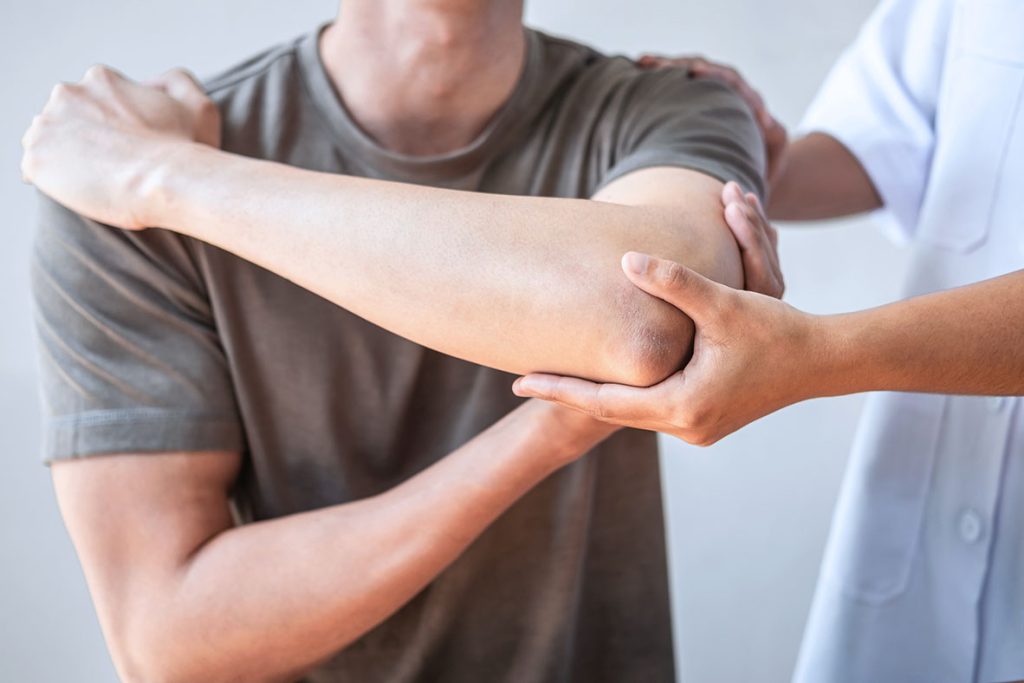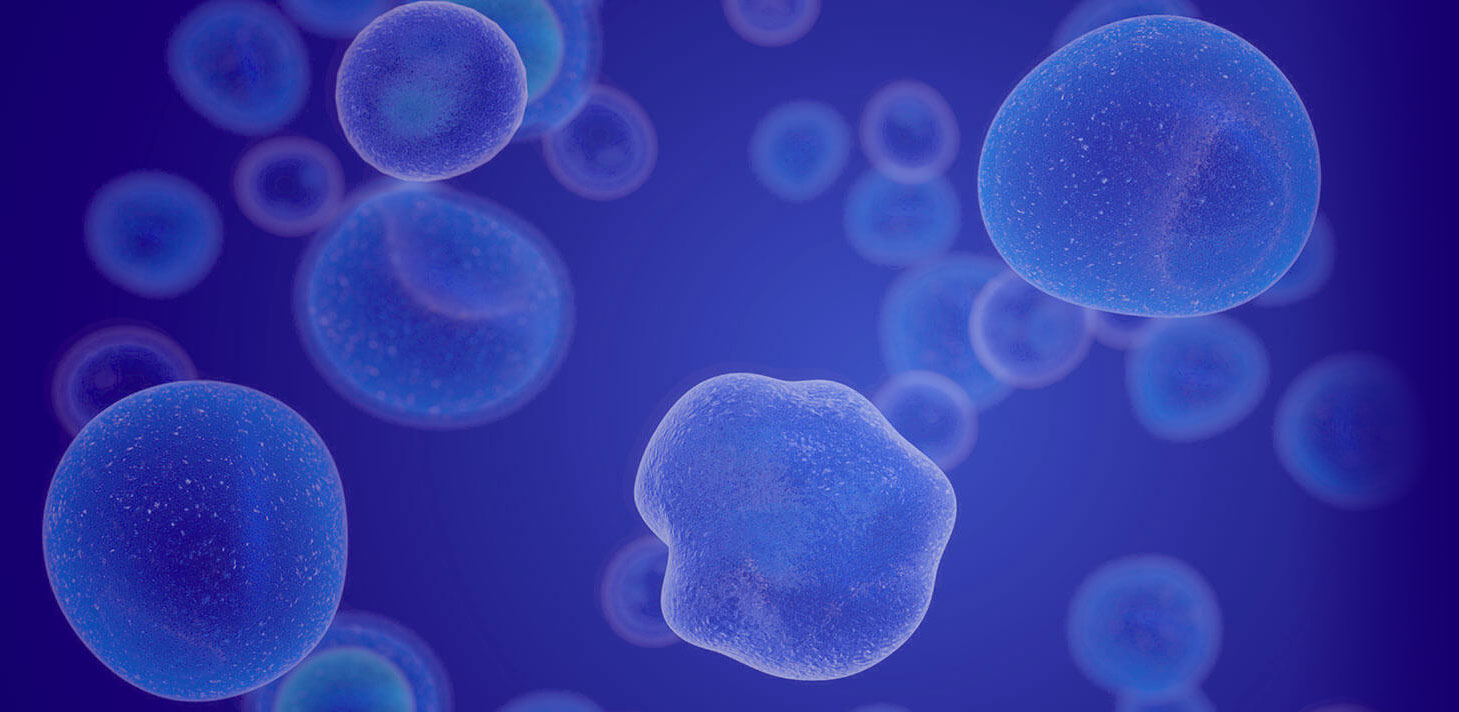Stem Cells for Joint Pain
Conveniently located to serve the areas of Greenville, SC, Spartanburg, SC, Columbia, SC, Anderson, SC and Asheville, NC

Stem cells are undifferentiated cells that have the potential to grow and transform into various types of cells and tissues throughout the body and are integral to our development and healing. In other words, they are essential for life in multicellular organisms and hold great promise for future medical breakthroughs.
One of the leaders in the field of stem cell research is Dr. John Haasis, the Medical Director and Founder of Daisy Stem Cell Therapy and Regenerative Medicine Centers of the Carolinas. Dr. Haasis has over 25 years of experience treating patients with regenerative and interventional medicine. He has treated thousands of individuals throughout our region and helped them live pain-free lives, and he can also help you! To experience the relief Dr. Haasis can offer, contact us today. Call (864) 775-5682 to schedule your consultation in Greenville, SC; Spartanburg, SC; Columbia, SC; Anderson, SC; or in North Carolina at our Asheville offices.
Contents
- 1 What are Stem Cells and What Can They Do?
- 2 What is Stem Cell Therapy?
- 3 What are the Benefits of Stem Cells for Joint Pain?
- 4 Who is the Ideal Candidate for Stem Cell Therapy?
- 5 Personal Consultation
- 6 What is the Procedure for Stem Cell Therapy?
- 7 Recovery
- 8 Results
- 9 What is the Cost of Stem Cell Therapy for Joint Pain in the Carolinas?
- 10 References
What are Stem Cells and What Can They Do?
So what does it mean to be an undifferentiated cell? Simply put, an undifferentiated cell has not yet “decided” what type of cell or tissue it will become. These cells are found throughout our bodies, and their primary function is to serve as a growth and repair system for the body.
Any cell that can rebuild tissue in the body is referred to as a “stem cell.” There are two main types of stem cells: embryonic and adult.
Embryonic Stem Cells
When we talk about stem cell therapy, these are not the stem cells of which we speak. Embryonic stem cells help us develop into the complex beings we are today. [1] For example, stem cells in the developing embryo give rise to all the different tissues and organs in our bodies.
Adult Stem Cells
Adult, or somatic, stem cells are found in various tissues throughout the body. While both types of stem cells have great potential for medical applications, there is currently more interest and research surrounding the use of adult stem cells.
Adult stem cells show promise in the treatment of different diseases and disorders, including [2]:
- Cardiovascular diseases
- Diabetic nephropathy
- Stroke
- Neural trauma
- Heatstroke
- Parkinson’s disease
- Alzheimer’s disease
And, of course, stem cells can help with joint pain!
The fluid within our joints contains mesenchymal stem cells (MSCs), which may differentiate into chondrocytes. Chondrocytes are the cells that make up cartilage and are responsible for its structure and strength. When these cells become damaged, it can lead to joint pain and other problems. [2]
Although the body may attempt to regenerate the damaged cartilage on its own, the small amounts of new cartilage are fragile and can be destroyed by applying little stress to the joint. In addition, there are only a restricted number of MSCs in the joint that may differentiate, and this process takes time. [2]
What is Stem Cell Therapy?
Stem cell therapy is an emerging treatment option that uses stem cells to repair and regenerate damaged tissue. When we injure ourselves, stem cells rush to the site of injury and begin the process of repair.
There are two main types of stem cell therapy: autologous and allogeneic. Autologous stem cell therapy uses a patient’s own stem cells, while allogeneic stem cell therapy uses stem cells from a donor.
Autologous stem cell therapy is the most common type of stem cell therapy currently being used. In autologous stem cell therapy, a patient’s own stem cells are harvested from their adipose tissue or bone marrow, processed, and then injected into the affected area. The advantage of autologous stem cell therapy is that there is no need for donor matching, and there is no risk of rejection, as the patient’s own cells are being used. [3]
What are the Benefits of Stem Cells for Joint Pain?
What methods have you tried to treat your joint pain? Maybe you’ve taken medication or undergone surgery, but you’re still in pain. If so, you’re not alone. Millions of people suffer from joint pain, and many of them don’t find relief with traditional treatment methods; this is where stem cells can help.
Joint pain can be caused by a variety of factors, including:
- Injury
- Arthritis
- Being overweight
- Age
- Other degenerative diseases
Because of their trophic and anti-inflammatory, immunosuppressive, and regenerative abilities, stem cell therapy for joint pain has generated a lot of excitement in the orthopedics and rheumatology communities. MSCs hold great promise in reducing the suffering caused by degenerative joint diseases, according to researchers. They can also be used for local or generalized cell therapy and are intended for use as replacement tissue. [4]
There are many benefits associated with stem cell therapy, including:
- Relief from pain and inflammation
- Improvement in joint function
- Regeneration of damaged tissue
- Delay or avoidance of joint replacement surgery
Another benefit of stem cell therapy is that it is a minimally invasive treatment option, as it only involves injecting the stem cells into the affected area. This means that there is no need for surgery, which can often be risky and complicated.
Stem cell therapy is a safe and effective treatment for joint pain, and it is an increasingly popular treatment option for those who have unsuccessfully tried other methods of treatment.
If you are suffering from joint pain, contact Daisy today! We offer stem cell therapy as a treatment option for those suffering from joint pain, as well as a variety of other conditions. To learn more about stem cell therapy or to schedule a consultation, call us today at (864) 775-5682!
Who is the Ideal Candidate for Stem Cell Therapy?
The ideal candidate for treating joint pain with stem cells suffers from joint pain. Perhaps they have unsuccessfully tried other, more traditional methods of treatment such as medication or surgery. If you are still suffering from joint pain despite these other treatments, stem cell therapy may be right for you.
The ideal patient for stem cell therapy is someone who is in generally good health and does not have any serious underlying medical conditions.
As with any medical procedure, there are some risks associated with stem cell therapy. However, these risks are generally low and can be minimized by working with a qualified and experienced medical professional like Dr. Haasis.
If you are considering stem cell therapy for your joint pain, it is important to consult with Dr. Haasis first so he can assess your individual case and determine whether or not stem cell therapy is right for you.
Personal Consultation
During your consultation with Dr. Haasis count yourself lucky; you are meeting with the premiere expert in the application of stem cells for treating degenerative joint diseases.
Dr. Haasis will go over your health history and what other treatments you’ve tried for your joint pain. He will also perform a physical examination and order any necessary tests, such as X-rays or MRI scans, to get a better understanding of your condition.
Based on this information, Dr. Haasis will be able to determine whether or not you are a good candidate for stem cell therapy. If you are, he will develop a customized treatment plan that is tailored to your specific needs and goals.
Dr. Haasis is a board-certified, fellowship-trained doctor specializing in pain management. He has the skills and experience needed to treat patients using stem cells. Dr. Haasis is thrilled to bring pain relief to patients who never thought living pain-free was a possibility. Start your journey to relieving joint pain without surgery by scheduling a consultation with Dr. Haasis today.
What is the Procedure for Stem Cell Therapy?
The stem cell therapy procedure is relatively simple. Dr. Haasis thoroughly screens and verifies his donor cells from a trusted source so that he can pass the peace of mind on to you. The harvested tissue is then placed in a centrifuge to form a concentrated serum of stem cells. Dr. Haasis will then inject the serum into the joints requiring treatment.
Recovery
You will most likely need around 24 hours to take it easy, but you will still be able to work and do most of your regular activities. Most patients experience some degree of soreness and swelling in the treated joint for the first few days after the procedure. This is normal and will resolve on its own. You can ice the area to help reduce any discomfort.
You will be given specific instructions on how to care for your joint after the procedure. It is important to follow these instructions carefully in order to ensure a successful outcome.
Results
Do you take pain medication every day for your joint pain? Are you unable to enjoy your favorite activities due to stiffness and pain? Are you ready for life-changing results after receiving stem cell therapy for joint pain?
Patients will experience:
- A significant reduction in pain
- An increase in joint function
- The ability to return to the activities they enjoy
- Improved quality of life
The timeline of results varies from patient to patient.
If you are ready to find out if stem cell therapy is right for you, contact us today to schedule a consultation. Dr. Haasis will be happy to answer any questions you may have and help you make the best decision for your individual needs.
What is the Cost of Stem Cell Therapy for Joint Pain in the Carolinas?
The cost of stem cell therapy will vary depending on the number of treatment areas and the specific needs of the patient.
During your consultation, Dr. Haasis will develop a personalized treatment plan that is tailored to your individual goals. At that time, we will be able to provide you with an estimate of the total cost of your treatment.
Don’t live with joint pain for one more day. Call us to schedule a consultation and find out if stem cell therapy is right for you. Call (864) 775-5682 to schedule your consultation in Greenville, Spartanburg, Columbia, or Anderson, SC, or at our North Carolina locations in Asheville.
References
- Ankrum, J., & Karp, J. M. (2010). Mesenchymal stem cell therapy: Two steps forward, one step back. Trends in Molecular Medicine, 16(5), 203–209. doi: 10.1016/j.molmed.2010.02.005
- Uth K. Stem cell application for osteoarthritis in the knee joint: A minireview. World Journal of Stem Cells. 2014;6(5):629. doi:10.4252/wjsc.v6.i5.629
- Champlin R. Selection of Autologous or Allogeneic Transplantation. Holland-Frei Cancer Medicine 6th edition. Published online 2003. Accessed October 11, 2022. https://www.google.com/url?q=https://www.ncbi.nlm.nih.gov/books/NBK12844/&sa=D&source=docs&ust=1665510651205909&usg=AOvVaw27lt8iksrWG68VGYCGv2lO
- Chen FH, Tuan RS. Mesenchymal stem cells in arthritic diseases. Arthritis Research & Therapy. 2008;10(5):223. doi:10.1186/ar2514


